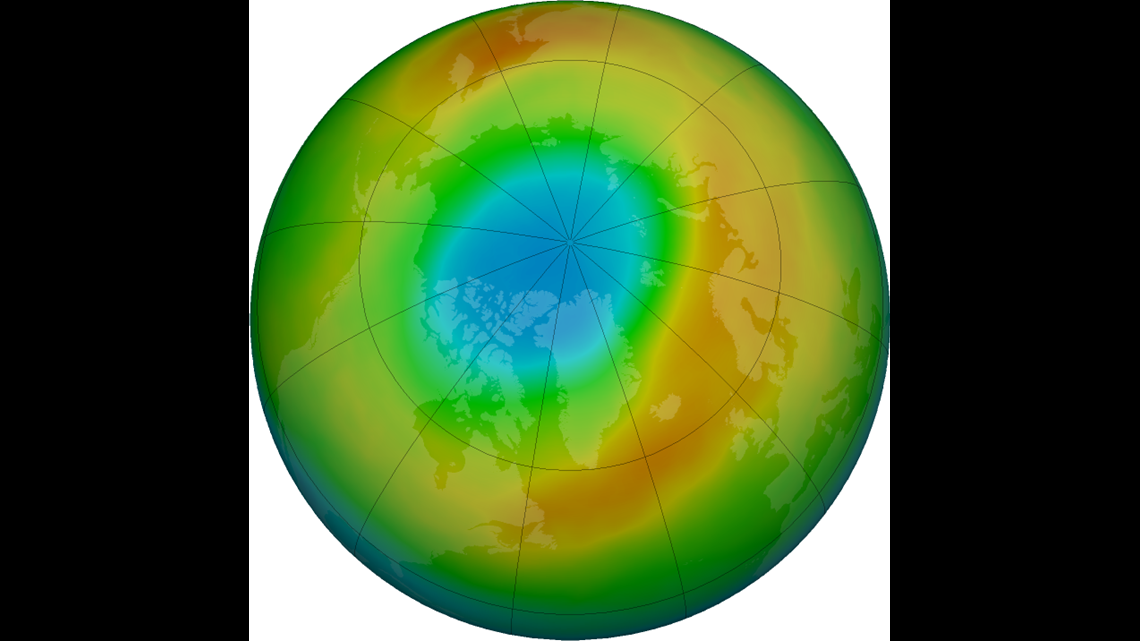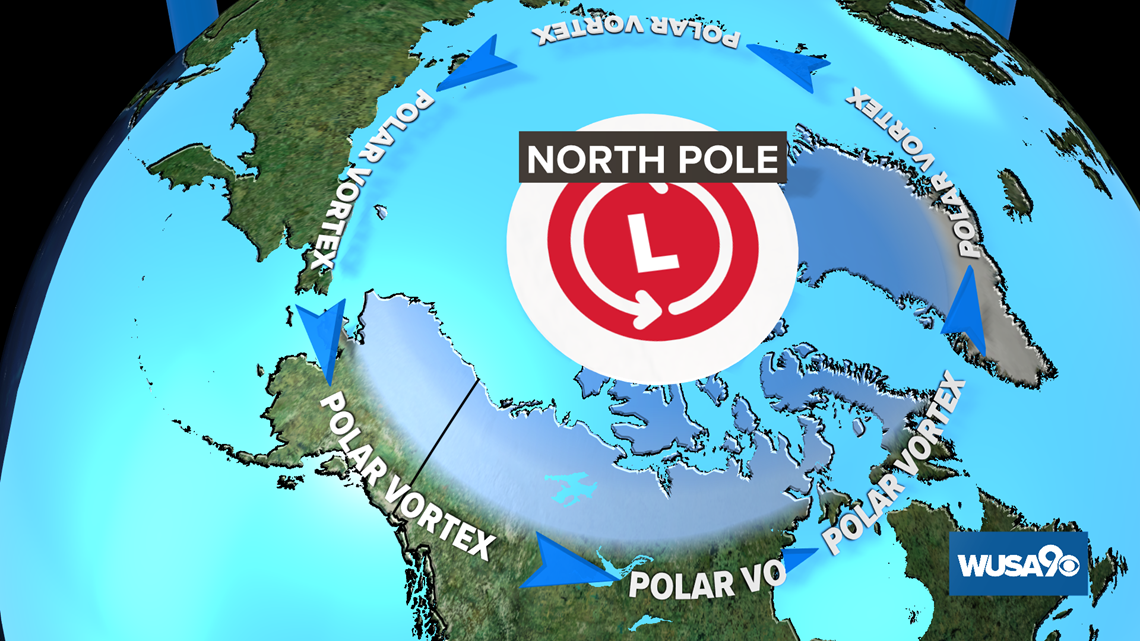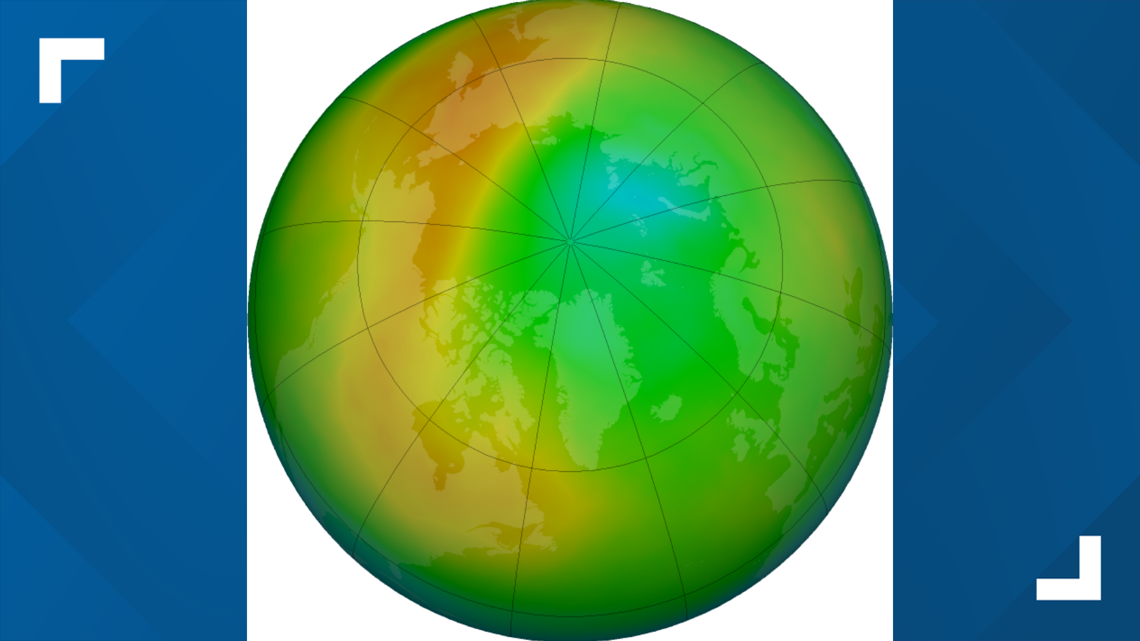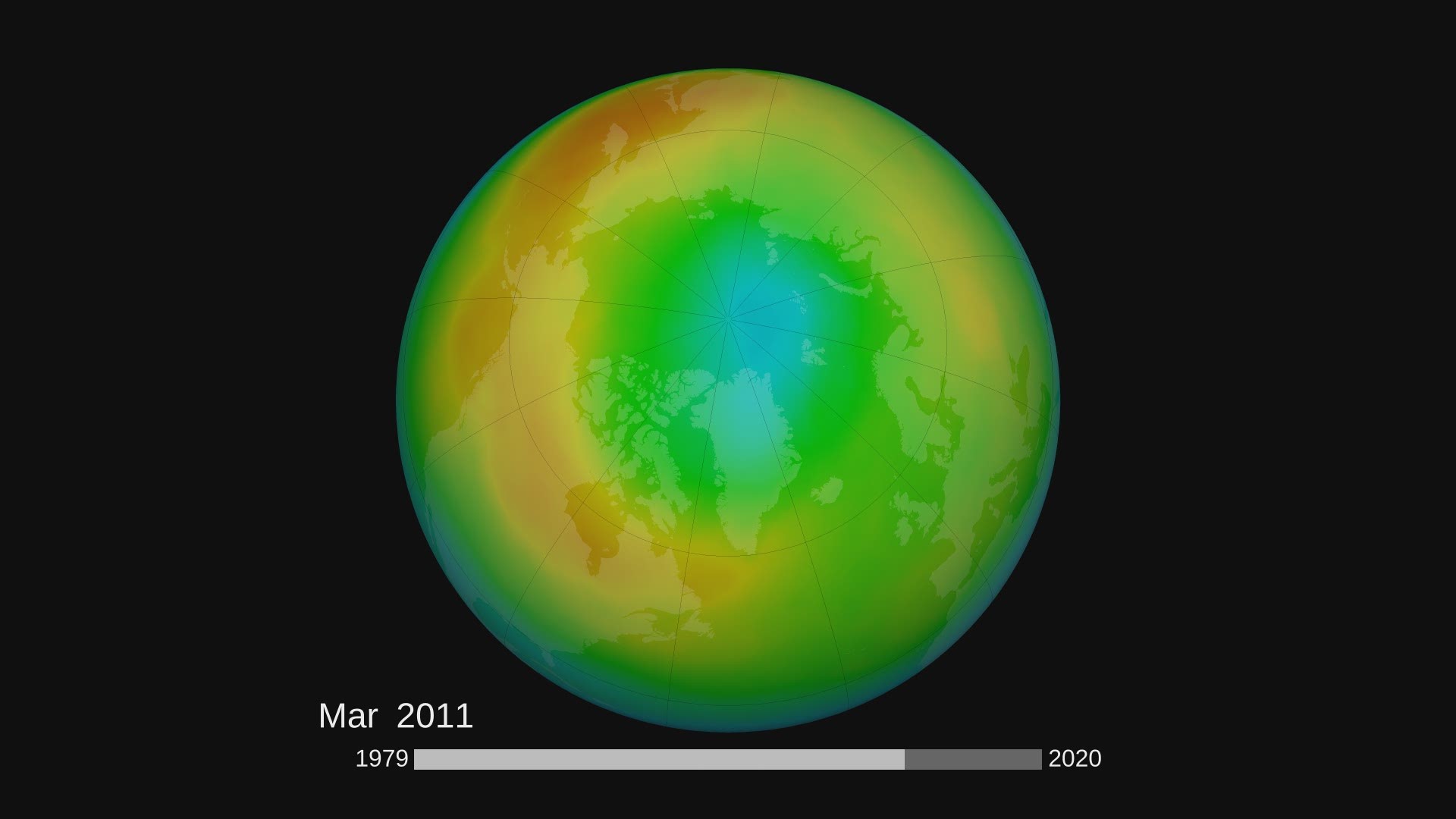WASHINGTON — While most people are familiar with the ozone hole over the South Pole, few are aware of a similar destruction of the ozone layer over the North Pole. The Arctic ozone reached an all-time low in March.
Ozone protects us from deadly forms of radiation from the sun. Essentially, there was a large ozone "hole," or lack of ozone, across a portion of the Arctic, according to the NASA Ozone Watch team. They monitor the Arctic and the Antarctic regions for ozone levels throughout the year.
In a higher section of the atmosphere known as the stratosphere, ozone prevents a majority of deadly UV radiation from reaching Earth from the Sun.


This radiation, known as UV-B radiation, is the major cause of skin cancer, which is the most common form of cancer in the U.S. It kills more than 7,000 Americans each year.
Dr. David Tarasick, a researcher with Environment and Climate Change Canada, explains how our unusual winter led to a "hole" in the ozone layer last month.


"The ozone hole was quite a surprise when the Antarctic one was first discovered in the 1980s," Tarasick said. "While we understood, fairly well, the chemistry that happens in the normal atmosphere….what was not anticipated was the exotic chemistry that can happen in the very cold, dark conditions of the polar stratosphere. Under those conditions, these ice clouds form, and those clouds allow a kind of chemical processing that releases chlorine, which originates from the refrigerants that we have now banned, the chlorofluorocarbons, or CFCs."
CFCs were once in widespread use across the world and were found in objects ranging from refrigerators to aerosol spray cans. A wave of concern from scientists in the 1970s and '80s grew when research showed that CFCs are an ozone killer.
This led to a ban on the ozone-destroying gases at the 1987 treaty agreement known as the Montreal Protocol.
Chlorine is normally trapped in the form of reservoir species, meaning it's normally not chemically reactive. The chlorine is released when ice clouds, known as Polar Stratospheric Clouds, are hit with sunlight at the start of spring. The surface of Polar Stratospheric Clouds is where the ozone destruction takes place.
Specifically, UV radiation reacts with CFCs sitting on the Polar Stratospheric Clouds. This reaction leads to free chlorine molecules, which then float around the atmosphere, destroying ozone.
"[The chlorine] sits there until the sun comes up and evaporates the clouds," Dr Tarasick said "And so when the sun rises, you get this huge rate of destruction of the ozone in the Arctic. All of the ozone in a certain layer is gobbled up. So we can actually measure no ozone in those layers."


In March, ozone levels over the North Pole regions fell to 205 Dobson Units, which is about 84% less than normal.
The cause of this "hole" over the Arctic is a natural phenomenon known as the Stratospheric Polar Vortex. If the term "polar vortex" sounds familiar, you may recall the winter of 2013 and 2014 when "polar vortex" became a popular term in the media.
This past winter, the polar vortex was much stronger than average, keeping the super cold air bottled up over the North Pole. This left us with a mild winter in the lower 48, including here in the D.C. region.


The extra cold air over the Arctic regions meant more Polar Stratospheric Clouds. More Polar Stratospheric Clouds led to a greater amount of ozone destruction
The polar vortex finally weakened in the spring, which led to the cooler-than-average weather during April and early May in the mid-Atlantic.
So how bad was Ozone destruction this past winter?
"This is the most we’ve seen ever in the Arctic," Tarasick said.
While it’s not a certainty, the ozone poor air could reach our part of the Earth and lead to an increase in skin cancer rates.
Tarasick also believes that climate change is linked to the unusual behavior of the polar vortex this past winter, which led to the record Arctic ozone hole. He, along with other researchers, is looking into this link now.


So what can we do about it here in the DMV? Wear your sunscreen.
"That’s number one," Tarasick said. "Or a hat, especially for people who are getting thin on top like me. And yes, stop burning fossil fuels -- that would be a good idea too."
Since the start of April, the Arctic ozone hole has since recovered, as it does every year with the return of the warm season.

